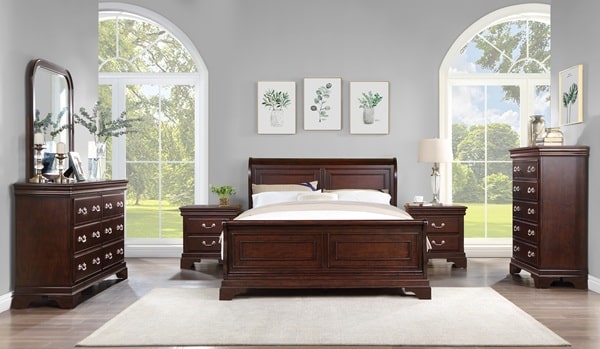Walnut wood is a popular choice among woodworking experts who want reliable and stylish wood for their projects. But what exactly does Walnut wood offer when compared to the other popular wood options? Well, that’s something only experts know. But what if we give you insights into why people prefer Walnut wood and when should you actually avoid using it in your woodworking project? So yeah, come with us on this deep dive into the advantages and disadvantages of Walnut wood. If this is the topic that intrigues you the most, then we’d advise you to stick with us till the end. Here we go.
Advantages Of Walnut Wood
Let’s start off this post with the best things about Walnut wood, and you’re going to love this section for sure.
- Aesthetic Appeal
Hands down, one of the major advantages of walnut wood is how drop-dead gorgeous it is. That rich, warm coloring gives off an immediate impression of luxury, perfect for those high-end, designer-worthy pieces of furniture or fancy woodworking. The color spectrum is a treat for the eyes too, shifting between shades of soft, inviting light brown to a deep, sophisticated dark chocolate color. Not to mention, it comes with these naturally occurring dark brown streaks that just kick its visual appeal up a notch. It’s like Mother Nature’s own version of wood grain art.
- Durability
Now, as you know, looks aren’t everything. It’s incredibly durable too, really standing up to the test of time. This makes it a dream come true for furniture, flooring, and other high-traffic areas where longevity isn’t just a plus, it’s a must. So, whether it’s the daily shuffle of feet or the rigorous use of a busy dining table, walnut wood holds its own.
- Stability
This hardwood has got stability down pat, outdoing many of its hardwood peers. Its less-prone-to-warping-or-cracking nature means it stays in great shape for longer, retaining the integrity of whatever awesome item you’ve crafted from it. Your walnut wood piece isn’t just built to last, it’s built to last while looking good as new.
- Workability
For all the DIY enthusiasts and professional woodworkers out there, walnut wood is like your trusty sidekick. It’s pretty easy to work with, whether you’re going old-school with hand tools or crafting it up with some power tools. That friendliness in the workshop means more than just an easy time crafting, it’s a call to creativity and complex designs.
- Water Resistance
Lastly, we can’t ignore the underrated but quite important trait of walnut wood, its impressive resistance to water and mold. When given the right exterior finish, it’s like a duck to water, making it a fantastic choice for outdoor projects. This extra resistance not only extends the lifespan of your outdoor furniture and structures but also maintains their look and strength through the seasons.
Disadvantages Of Walnut Wood
Yeah, Walnut wood got a ton of benefits, but like most things in life, it sure has some disadvantages to consider, and here are the most prominent ones:
- Cost
Walnut wood ain’t your everyday, run-of-the-mill kind of hardwood. Nope, it sits proudly in the VIP section of the woodworking world. This is mainly because there’s a pretty high demand for this luxurious wood and frankly, it’s not as readily available as some other types. So, if you’re thinking about walnut wood, be ready to loosen your budget a bit more than usual.
- Softness
Sure, walnut wood is durable, but it’s got a softer side too, literally. In the lineup of hardwoods, it’s relatively more pliant, making it a bit of a magnet for dents and scratches. Sure, it can take a bit of roughing up, but too many scuffs and scrapes, and it starts to lose its charm. So, if you’re considering Walnut for a high-traffic area, remember that over time, the hustle and bustle might leave a mark.
- Toxicity
For some folks, walnut wood dust is a bit like kryptonite. Exposure can lead to skin irritations, breathing troubles, and other unpleasant health issues. If you’ve got allergies, it’s a bit like springtime all year round when you’re working with walnut wood. So, take it from us, put on your safety gear, and take the necessary precautions if you’re sawing or sanding this wood.
- Susceptibility to Insect Attack
Here’s the thing, walnut wood is pretty tough when it comes to resisting decay, but insects? Well, that’s a whole different story. Especially when it comes into contact with soil, walnut wood can become a bit of a bug magnet. So, while it’s a stellar choice for indoor furniture, you might want to think twice before using it for that garden bench or outdoor decking, unless you want to risk shortening its lifespan.
Conclusion
There you have it. Now you have the actual understanding about when to use walnut wood, and when to avoid it. In the end, the choice of choosing a wood type for your woodworking project only depends upon your needs, and of course your budget.


